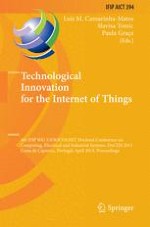This book constitutes the refereed proceedings of the 4th IFIP WG 5.5/SOCOLNET Doctoral Conference on Computing, Electrical and Industrial Systems, DoCEIS 2013, held in Costa de Caparica, Portugal, in April 2013. The 69 revised full papers were carefully reviewed and selected from numerous submissions. They cover a wide spectrum of topics ranging from collaborative enterprise networks to microelectronics. The papers are organized in the following topical sections: collaborative enterprise networks; service orientation; intelligent computational systems; computational systems; computational systems applications; perceptional systems; robotics and manufacturing; embedded systems and Petri nets; control and decision; integration of power electronics systems with ICT; energy generation; energy distribution; energy transformation; optimization techniques in energy; telecommunications; electronics: devices design; electronics: amplifiers; electronics: RF applications; and electronics: applications.
